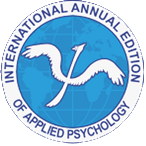Eye-Tracking: Regularities of Educational Information Searching
Abstract
This work describes the results of research concerning patterns of students’ visual attention while searching answers using an educational source for a limited period of time. The eye-tracking technology was used to perform the experiment. The following aspects were found out: which part of an informational source attracts attention the most; the blind spots of the source; the differences in searching the information between humanity students and natural science students; the impact of using graphical material on execution of a task to solve. These findings may be used for creating the educational information source.
Key words:
Bibliography
- McKay E. N. UI is Communication. Morgan Kaufmann, 2013. 378 p.
- Chiu T. K. F., Churchill D. Design of learning objects for concept learning: effects of multimedia learning principles and an instructional approach. Interactive Learning Environments, 2016, Volume 24, P. 1355-1370. DOI: 10.1080/10494820.2015.1006237
- Tüzün H., Çınar M. Guidelines for Transferring Residential Courses into Web. International Review of Research in Open and Distributed Learning, 2016, Vol 17, No 4, P. 145-165.
- Blignaut A. S. Infinite Possibilities for Using Eyetracking for Mobile Serious Games in Order to Improve User Learning Experiences. 14th World Conference on Mobile and Contextual Learning, mLearn 2015, CCIS 560, P. 70-83. DOI: 10.1007/978-3-319-25684-9_6
- Dolgunsöz E. Using eye-tracking to measure lexical inferences and its effects on reading rate during EFL reading. Journal of Language and Linguistic Studies, 2016, 12(1), P. 63-78.
- Wojdynski B. W., Bang H. Distraction effects of contextual advertising on online news processing: an eye-tracking study. Behaviour & Information Technology, 2016, Volume 35, P. 654-664. DOI: 10.1080/0144929X.2016.1177115
- Anson C. M., Schwegler R. A. Tracking the Mind’s Eye: A New Technology for Researching Twenty-First-Century Writing and Reading Processes. College Composition and Communication, 2012, 64(1), P. 151–171.
- Raney G. E., Campbell S. J., Bovee J. C. Using Eye Movements to Evaluate the Cognitive Processes Involved in Text Comprehension. Journal of Visualized Experiments, 2014, (83). DOI: 10.3791/50780
- Hidalgo-Sotelo B., Oliva A. Person, place, and past influence eye movements during visual search. Proc. 32nd; Annual Conf. of the Cognitive Science Society, 2010, P. 820-825. Austin, TX: Cognitive Science Society.
- Bekkering H., Neggers S. F. Visual search is modulated by action intentions. Psychological Science, 2002, 13(4), P. 370-374.
- Orchard L. N., Stern J. A. Blinks as an index of cognitive activity during reading. Integrative Physiological & Behavioral Science, 1991, 26, P. 108-116.
- Smilek D., Carriere J. S., Cheyne J. A. Out of mind, out of sight eye blinking as indicator and embodiment of mind wandering. Psychological Science, 21(6), 2010, P. 786-789. DOI: 10.1177/0956797610368063
- Martens S., Munneke J., Smid, H., Johnson A. Quick minds don’t blink: Electrophysiological correlates of individual differences in attentional selection. Journal of Cognitive Neuroscience, 2006, 18(9), P. 1423-1438.
- Barabanschikov V. A., Zhegallo A. V. Eye-tracking: methods of registration eye movements in psychological research and practice. Cogito-Centre, 2014. 128 p.
- Soh O. Examining the reading behaviours and performances of sixthgraders for reading instruction: evidence from eye movements. Journal of e-Learning and Knowledge Society, 2016, Vol. 12, n. 4, P. 63-79.
Journal issue:
стр. 97

